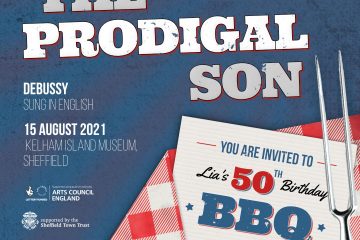Royal Northern Sinfonia: Beethoven 2020
The Royal Northern Sinfonia, in partnership with Middlesbrough Town Hall are celebrating Beethoven’s 250th Anniversary. Over a period of 11 months, starting on the 23rd January, the acclaimed orchestra will pay tribute to the composer by performing each of his 9 symphonies over the course of five concerts.
As part of the series, the Royal Northern Sinfonia has held a Young Composers’ Competition, offering university or conservatoire students across the UK the opportunity to compose a piece of music influenced by Beethoven’s body of work. Each performance of the cycle will be led by up and coming conductors below the age of 35 and include two Beethoven symphonies, as well as an original commission from one of the RNS competition winners.
The series of concerts aims to elicit a contemporary response to both interpretation and relevance of Beethoven’s work by asking the next generation of conductors and composers: ‘Why is Beethoven still relevant today?’
Thorben Dittes, Director of the Royal Northern Sinfonia answers this by saying:
“Beethoven’s music still inspires young conductors and composers today and has the potential to engage the widest possible audience. “The aim of Beethoven 2020: The Next Generation is to involve emerging artists passionate about Beethoven, to take this music out into the region, and to spark a response to the interpretation of these masterpieces.”
The series is supported by Classical Futures Europe, an EU funded platform supporting emerging classical artists, pioneering new approaches to concert presentation and the development of new audiences and community participation in classical music.
Beethoven 2020: The Next Generation will take place at Middlesbrough Town Hall on the following dates: 23rd January, 19th March, 4th June, 8th October and 12th November.
Tickets for Beethoven 2020 are available from: https://www.middlesbroughtownhall.co.uk/event/royal-northern-sinfonia/
The Next Generation – Interviews with the Composers
I caught up with composers Abel Esbenshade (AE), Sam Gooderham (SG) and Kristina Arakelyan (KA) to find out more about their new commissioned works:
1) Did you target any specific works by Beethoven for this commission? Or was it more his style and the effect it has had in modern society?
(AE): My piece targets Beethoven’s symphonies, using memorable pieces of material from symphonies 1, 3, 5, 6, 7, and 9 as a way of grabbing hold of listeners’ most basic connotations of Beethoven and manipulating them to form a narrative. I was also inspired to take on Beethoven’s impenetrable status in classical music culture and address the personality and characters portrayed in his music–especially heard with a contemporary ear. Neither of these seem to match up with accounts of what he was like as a person: poor-mannered and unkempt, shouting and spitting at strangers and speaking his mind.
In my piece, Beethoven Museum I aimed to make Beethoven’s material rough, baffling, and fresh anew, bringing it closer to the experience listeners in Beethoven’s day would have had hearing his music for the first time and to that rough-around-the-edges, unrestrained character.
(SG): My work specifically uses material from the first movements of his first, fifth and ninth symphonies, which I took as recognisable material that was representative of his three “periods” and that I could then distort and re-imagine.
(KA): I was inspired by both Beethoven as a composer, and Beethoven as a person. Beethoven’s Waldstein piano sonata (no. 21), particularly the beautiful C major theme of the final movement, is a deeply inspiring work and was the basis of my composition. I was particularly inspired by the period in Beethoven’s life when this sonata was written – one year after writing a devastating letter to his brothers (now known as the Heiligenstadt Testament). His ability to overcome his struggles and compose magnificent music is a testimony to his unbelievable strength in character.
2) How did you approach composing a new work for a large ensemble?
(AE): It’s always a privilege to have the opportunity to write for orchestra and not one that comes often. In the case of this piece I had material from Beethoven’s symphonies as a starting point for writing the piece. This meant the first steps were revisiting his scores, picking out my favorite bits, and finding new potential gestures and meaning in them and new ways of fitting them together. I was lucky to be given a workshop with the Royal Northern Sinfonia in which the orchestra tested out my initial sketches giving me a better insight going into completing the piece.
A difficult part of the process was actually finding a place in the piece for me to write original material, non-derivative of Beethoven. While I had originally intended to use only fragments of Beethoven symphonies in putting the piece together, there was one hole in the middle that I couldn’t fill with Beethoven. I decided this section needed to travel far away from Beethoven’s music to grant an appropriately tense middle section to the piece and so composed original music which maximized this tension.
(SG): By using Beethoven’s own material as a starting point, and from there finding ways to sculpt the sound as a singular “mass” and exploring procedures that I knew would create interesting results at any scale.
(KA): The instrumentation was dictated by the musical themes and their character. For example, the tutti section at the end was planned to be for the full orchestra, and each variation features a specific sonority.
3) Why do you think that Beethoven is relevant today?
(AE): Beethoven’s music helped to cause a significant shift in the approach to and significance of orchestral music in the 19th century. So I think it’s pretty clear that acknowledging that shift is important. That being said, I think trying to make Beethoven’s music relevant today in the way it was in the 19th century is impossible and pointless. Classical music institutions serve a different function today than they did 250 years ago and a listener today just won’t hear a Beethoven symphony in the way one would have then. But like any significant part of our history, Beethoven holds a strong place in the historically-inclined institutions that uphold him and of course in the world of memes and cultural commentary–which I tap into in my piece. I also think he wrote some good music that I really love.
(SG): I think Beethoven’s influence on symphonic repertoire and orchestras in general will be felt for as long as orchestras continue to exist. The symphony as we know it was essentially invented by him, so as long as there’s an audience for that there’ll be room for Beethoven in classical music culture.
(KA): The emotion and magnitude of Beethoven’s works transcend time. Beethoven’s music is exciting to the listener – it is full of surprises, lyricism, a range of emotions. His music also allows us to become immersed in a deeply philosophical experience.
4) If you had to describe your new work in one sentence, what would the sentence be?
(AE): All your favorite Beethoven wrapped up into one goofy, uncomfortable, and terrifying 8-minute long meme.
(SG): Hearing multiple symphonies at once from the other side of a wall, possibly after a bottle of wine. (Hopefully that sounds like a good time!)
(KA): Variations and a theme: searching and striving to find Beethoven’s melody at the end.
5) When can we hear your works live?
(AE): Beethoven Museum will be performed alongside Symphonies 1 and 3 in Middlesbrough on 23. Jan and in Carlisle on 24. Jan.
(SG): The piece will be performed in October 2020, on the 7th in St Cuthbert’s Church in Carlisle and on the 8th at Middlesbrough Town Hall.
(KA): Thursday 12th November at Middlesbrough Town Hall & Saturday 14 November, 2020 in The Sands Centre, Carlisle.




0 Comments